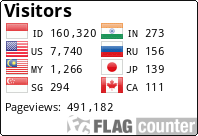Eksplorasi Justifikasi dan Rasionalisasi Mahasiswa dalam Konsep Teori Graf
DOI:
https://doi.org/10.33369/jpmr.v6i2.16526Keywords:
Eksplorasi, Justifikasi, Rasionalisasi, Teori Graf, MahasiswaAbstract
Tujuan penelitian ini adalah mendeskripsikan performa mahasiswa dalam memberikan justifikasi dan rasionalisasi terhadap empat buah pernyataan tentang konsep Teori Graf dalam konteks perkuliahan Matematika Diskrit. Penelitian ini adalah studi kasus dan melibatkan sebanyak 23 mahasiswa semester enam di salah satu perguruan tinggi negeri di Jakarta. Respon mahasiswa dianalisis dan dikelompokkan ke dalam empat kategori berdasarkan justifikasi dan rasionalisasinya. Temuan dari penelitian ini adalah bahwa sebagian besar mahasiswa belum dapat memberikan justifikasi dan rasionalisasi yang tepat terhadap empat pernyataan yang diberikan. Terkadang justifikasi tidak sejalan dengan rasionalisasi yang diberikan. Berdasarkan temuan tersebut, didapatkan bahwa keberhasilan atau kegagalan mahasiswa dalam memberikan justifikasi dan rasionalisasi setidaknya dipengaruhi oleh tiga faktor pendukung atau penyebab, yaitu: (1) pemahaman konsep, (2) koneksi matematis, dan (3) pembuktian matematika. Terdapat implikasi dari hasil penelitian ini.
References
Brodie, K. (2010). Pressing dilemmas: meaning?making and justification in mathematics teaching. Journal of Curriculum Studies, 42(1), 27–50. https://doi.org/10.1080/00220270903149873
Chua, B. L. (2017). A framework for classifying mathematical justification tasks. In CERME 10 (pp. 115–122). Dublin, Ireland.
Ellis, A. B. (2007). Connections between generalizing and justifying: Students’ reasoning with linear relationships. Journal for Research in Mathematics Education, 38(3), 194–229. https://doi.org/https://doi.org/10.2307/30034866
Harel, G., & Sowder, L. (2007). Toward comprehensive perspectives on the learning and teaching of proof. In J. F. K. Lester (Ed.), Second handbook of research on mathematics teaching and learning (Vol. 2, pp. 805–842). Charlotte, NC: Information Age Publishing.
Hart, E. W. (2008). Vertex-Edge Graphs: An essential topic in high school geometry. The Mathematics Teacher, 102(3), 178–185. https://doi.org/10.5951/MT.102.3.0178
Hazzan, O., & Hadar, I. (2005). Reducing abstraction when learning graph theory. Journal of Computers in Mathematics and Science Teaching, 24(3), 255–272.
Hopkins, B. (2009). Resources for teaching discrete mathematics: Classroom projects, history modules, and articles. Washington, DC: The Mathematical Association of America.
Marion, W. (1991). Discrete mathematics a mathematics course or a computer science course? Problems, Resources, and Issues in Mathematics Undergraduate Studies, 1(3), 314–324. https://doi.org/10.1080/10511979108965624
Medová, Páleníková, Rybanský, & Naštická. (2019). Undergraduate Students’ Solutions of Modeling Problems in Algorithmic Graph Theory. Mathematics, 7(7), 572. https://doi.org/10.3390/math7070572
Mert Uyangör, S. (2019). Investigation of the mathematical thinking processes of students in mathematics education supported with graph theory. Universal Journal of Educational Research, 7(1), 1–9. https://doi.org/10.13189/ujer.2019.070101
Pardamean, B., Suparyanto, T., & Kurniawan, R. (2013). Assessment of graph theory e-learning utilizing learning management system. Journal of Theoretical and Applied Information Technology, 55(3), 353–358.
Polya, G. (2014). How to solve it: A new aspect of mathematical method (2nd ed.). New Jersey: Princeton university press.
Quinn, A. (2015). Using Apps to Visualize Graph Theory. The Mathematics Teacher, 108(8), 626–631. https://doi.org/10.5951/mathteacher.108.8.0626
Rosen, K. H., & Krithivasan, K. (2012). Discrete mathematics and its applications: with combinatorics and graph theory (7th ed.). NewYork: Tata McGraw-Hill Education.
Santoso, E. (2018). Mathematics classroom activities based on some topics in graph theory to develop critical thinking of primary and secondary school students. International Journal of Indonesian Education and Teaching, 2(2), 154–160. https://doi.org/10.24071/ijiet.2018.020207
Stacey, K., Burton, L., & Mason, J. (1982). Thinking mathematically. Addison-Wesley.
Stylianides, A. J., & Al-Murani, T. (2010). Can a proof and a counterexample coexist? Students’ conceptions about the relationship between proof and refutation. Research in Mathematics Education, 12(1), 21–36. https://doi.org/10.1080/14794800903569774
Sumarsih, Budiyono, & Indriati, D. (2018). Profile of mathematical reasoning ability of 8 th grade students seen from communicational ability, basic skills, connection, and logical thinking. Journal of Physics: Conference Series, 1008(1), 012078. https://doi.org/10.1088/1742-6596/1008/1/012078
Suyitno, A., Suyitno, H., Rochmad, & Dwijanto. (2019). Graph theory as a tool to track the growth of student’s mathematical creativity. Journal of Physics: Conference Series, 1321(3), 032119. https://doi.org/10.1088/1742-6596/1321/3/032119
Thada, J. J., Hiengrat, C., & Nakprasit, K. (2013). Diagnosing of undergraduate students’ mathematical learning difficulties on introduction to graph theory in Faculty of Education, Khon Kaen University. ?????? ????? ??????, 31(4), 32–40.
Wahyuningsih, S, Satyananda, D., & Qohar, A. (2020). Improving creative problem solving performance of mathematics students by digital multimedia in graph theory course. In Journal of Physics: Conference Series (Vol. 1538, p. 012094). IOP Publishing. https://doi.org/10.1088/1742-6596/1538/1/012094
Wahyuningsih, Sapti, Satyananda, D., & Ghosh, A. (2018). Implementation of blended learning innovation in graph theory application course to face the education challenge in the 21st century. In Proceedings of the International Conference on Learning Innovation (ICLI 2017) (pp. 172–177). Paris, France: Atlantis Press. https://doi.org/10.2991/icli-17.2018.33
Downloads
Published
How to Cite
Issue
Section
License

Jurnal Pendidikan Matematika Raflesia oleh https://ejournal.unib.ac.id/index.php/jpmr dilisensikan di bawah Lisensi Internasional Creative Commons Attribution-ShareAlike 4.0 International .







